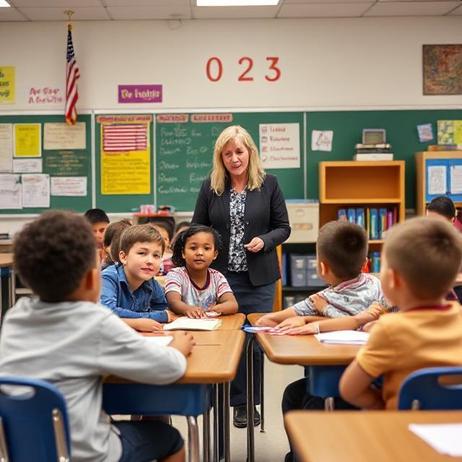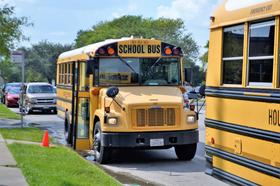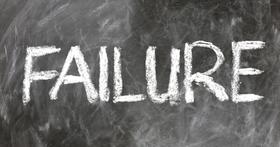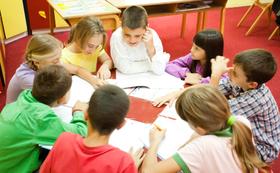The Future of Public Education in America
In 2025, the landscape of public education in America stands at a crossroads. Changes in demographics, funding, policy, technology and public sentiment are reshaping what it means for students, parents and educators to engage with the public school system. As we chart the future of public education in America, understanding where we are now—and where we might go—is essential for informed decision-making.
Current Snapshot: Strengths and Stresses
Enrollment and staffing
For the 2025 school year, about 54.1 million K-12 students are enrolled in public schools across the United States. Meanwhile, the workforce comprises approximately 5.7 million teachers and nearly 10 million staff members, including support personnel. Census.gov
Despite this scale, the sector is dealing with persistent challenges: a recent survey from RAND Corporation shows that in the 2024-25 academic year, 30 percent or more of students in many urban districts missed 10 percent or more of school days (the definition of chronic absenteeism). These figures point to a core truth: while public education serves tens of millions of students, the system is under strain.
Funding and expenditure
Public school funding remains a major focal point. According to data compiled by EducationData.org, per-pupil spending in many states ranges from about US $12,000 up to more than $30,000 in high-cost regions. Education Data Initiative On a national scale, the Organisation for Economic Co‑operation and Development (OECD) reports that the U.S. invests approximately US $20,387 per student when primary to tertiary education is all included.
Nevertheless, public perception remains wary. The 2025 “Schooling in America” survey from EdChoice found that 56 percent of Americans believe public school funding in their state is “too low”, though that number drops to 38 percent when actual funding per pupil is shown.
In short: substantial spending is going into public education, but stakeholders question whether it is distributed and applied in the most effective way.
Key Policy Shifts to Watch
Federal-state relations
In 2025 the role of the U.S. Department of Education (ED) is evolving. Federal guidance continues under statutes such as the Every Student Succeeds Act (ESSA) and the Individuals with Disabilities Education Act (IDEA), which establish baseline protections and funding mechanisms.
Simultaneously, ED has begun emphasising state flexibility and autonomy. For example, in July 2025 the Department encouraged states to “maximize opportunity” through waivers and reduced federal compliance burdens. U.S. Department of Education
This shift means states and local districts increasingly anchor the future of public education in America; federal mandates may become less prescriptive, and state policy will play an even larger role.
Curriculum, accountability, and innovation
Amid concerns about learning loss and student disengagement, districts and states are prioritising innovations such as expanded career and technical education (CTE), competency-based learning, and stronger links between high school and workforce readiness. The Department’s September 2025 release of supplemental priorities (e.g., “Career Pathways and Workforce Readiness”) confirms this trend.
At the same time, there is renewed emphasis on accountability and assessment. The RAND commentary notes that absenteeism remains high and learning gaps persist—so pressure on outcomes is mounting. For parents and students, this means public schools will increasingly pitch themselves not just on access and equity, but on measurable results and real-world readiness.
Demographics & Equity in Focus
Changing student population
Public education in America continues to serve an increasingly diverse student population. While official national figures for 2025 are still being released, trends show higher proportions of bilingual learners, students of colour, and students qualifying for free or reduced-price lunch. These shifts demand that public schools refine culturally responsive teaching, language supports and equity strategies.
Addressing gaps
Persistent achievement gaps remain a major concern. The pandemic exacerbated these for many students—especially in underserved communities—as noted in commentary on American education issues in 2025. Elevate K12 Public education systems must now embed recovery strategies, targeted interventions and wrap-around supports (e.g., mental-health services, tutoring, extended learning time) into standard operations in order to keep pace.
Public trust and school choice
Parent sentiment is shifting: in the 2025 PDK poll, 59 percent of parents said they would send their child to a non-public school if at least partial public funding were provided. This underscores the competitive pressures facing public education in America: as alternatives (charter schools, private school choice, home schooling) grow, public districts must reinforce quality, responsiveness and value.
Reinforcing this point is the focus of the internal link to the quality of the schooling environment: parents refer to review platforms such as PrivateSchoolReview.com or BoardingSchoolReview.com when comparing options, and public schools must increasingly meet those levels of scrutiny.
The Evolving Role of Technology and Environment
Hybrid and blended learning models
Post-pandemic, many public education systems have embedded hybrid and blended instruction models. Schools are leveraging digital platforms, adaptive learning tools and remote-capable infrastructure. While this trend began earlier, in 2025 it is increasingly mainstream and integrated—not simply emergency stopgap.
Infrastructure and facilities
Public education in America is also grappling with aging facilities, the need for upgraded technology infrastructure, and the demand for flexible learning spaces. Investment in these areas will be critical to maintain relevance and responsiveness across districts.
Social-emotional, mental health and wrap-around services
Educators and administrators recognise that teaching the “whole child” matters now more than ever. Public schools are increasingly integrating mental-health supports, trauma-informed practices and community-partner services—especially in underserved districts. As commentary highlights, students today face greater outside-classroom factors than in decades past.
What Parents, Students and Educators Should Expect
For Parents
Ask not only whether your child has access to a local public school, but how well that school is serving students in terms of outcomes, readiness, and supports.
Engage with your district’s plans for innovation, blended learning, equity and accountability—public education in America is evolving, and schools that remain static risk falling behind.
Monitor funding transparency and resource allocation; although per-pupil spending is high, usage and equity vary widely.
Compare public school options with private or charter alternatives—but recognise that the future of public education is increasingly shaped by responsiveness and community engagement.
For Students
Expect more options: many schools are now offering career pathways, dual-credit courses, and competency-based progression rather than traditional time-based increments.
Be ready for greater integration of technology and flexible learning models—embracing hybrid formats may become the norm.
Take advantage of wrap-around supports: public schools in 2025 are not just places for academic instruction, but increasingly hubs for holistic development.
For Educators and Administrators
Expect change in policy and accountability. State and local agencies will likely receive more autonomy, but with heightened expectations for measurable progress.
Invest in professional development in digital pedagogy, culturally responsive teaching and student-wellness strategies.
Focus on outcomes and dir="ltr" style="list-style-type: disc; font-size: 12pt; font-family: Arial, sans-serif; color: rgb(0, 0, 0); background-color: transparent; font-variant-numeric: normal; font-variant-east-asian: normal; font-variant-alternates: normal; font-variant-position: normal; font-variant-emoji: normal; vertical-align: baseline; white-space: pre;">
Engage parents and community stakeholders proactively—public education in America is moving toward greater transparency and responsiveness.
Looking Ahead: Opportunities and Risks
Opportunities
Public education in America has the potential to become more customised, equitable, and future-focused. With emerging models of instruction, better integration with workforce readiness, and greater stakeholder engagement, the system can transform.
The significant per-pupil investment (as highlighted by OECD data) means that resources exist. The challenge is to deploy them effectively.
Collaboration among districts, states and the private sector (technology, workforce partners) can further accelerate innovation and responsiveness.
Risks
Without adaptation, some public schools may struggle to keep pace with the “new normal” of education in America—especially in under-resourced or high-poverty districts.
Public trust is fragile. As parent sentiment shifts toward school choice and competition intensifies, public schools risk enrollment decline or resource loss.
Policy uncertainty looms: with changing federal-state dynamics, the role of federal support, compliance, and oversight may shift radically.
Equity gaps remain. If public education in America fails to address the varied needs of students—including bilingual learners, students with disabilities and those from low-income backgrounds—achievement gaps may widen.
Conclusion
The future of public education in America is neither predetermined nor static—it is actively being reshaped. For parents, students and educators, the message is clear: public schools are evolving, and staying informed matters. Enrollment figures and spending levels show the magnitude of the system; chronic absenteeism, learning gaps and shifting parent sentiment highlight the urgency for change.
Policy shifts, new learning models and demographic change are redefining what public education in America must look like if it is to meet 21st-century demands. Those who engage thoughtfully now—asking questions, embracing innovation, holding systems accountable—will be in the best position to thrive in this new environment.
Public education in America has always been a cornerstone of our society. In 2025 and beyond, it has the opportunity to renew itself, adapt to new realities, and reaffirm its promise: to educate every child well.















